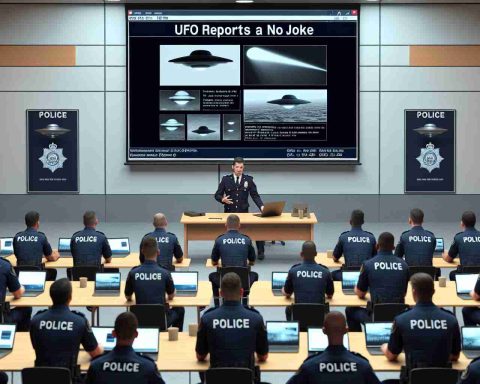Exploring the Wonders of Solar Eclipses
Solar eclipses are mesmerizing natural occurrences that captivate millions every 18 months. While these events thrill viewers worldwide, they hold immense significance for scientists. Solar eclipses offer a unique opportunity to study the solar corona, the sun’s outer atmosphere, which remains elusive during regular observations.
However, these spectacular phenomena come with limitations. For scientists to gather useful data, the eclipse must be visible from specific locations and under ideal weather conditions. Given these challenges, reliance on natural events can be frustrating for researchers.
In a groundbreaking move, the European Space Agency (ESA) has initiated an ingenious solution by launching the Proba-3 satellite. Unlike an ominous plan to shroud the Earth in darkness, this mission aims to create an artificial eclipse. The Proba-3 system consists of two components positioned 150 meters apart. The Occulter, equipped with a specialized disk, will block sunlight, allowing the Coronagraph, outfitted with advanced instruments, to study the solar corona.
Through this initiative, scientists aspire to unravel five key enigmas surrounding the sun, including the mystery of its hot corona, the factors driving solar winds, and the behavior of electrons in Earth’s radiation belts. As the Proba-3 system orbits and positions itself for detailed study, the research promises to enhance our understanding of solar dynamics significantly.
Prepare to witness a new era in solar science!
Understanding the Broader Implications of Solar Eclipses
The study of solar eclipses extends beyond scientific curiosity; it touches on vital aspects of society, culture, and the global economy. Eclipses have historically inspired myths and cultural narratives across civilizations, reflecting humanity’s quest to explain celestial phenomena. With increased public interest in solar eclipses, educational programs and astronomy tourism have surged, stimulating local economies. Events surround eclipses often draw thousands of visitors to regions within the path of totality, highlighting the potential for economic growth through science-based tourism.
The environmental implications of solar eclipses warrant attention as well. While the temporary darkness affects wildlife behavior and ecosystems, research on solar eclipses can inadvertently promote awareness about the fragility of Earth’s environment. As organizations like the ESA utilize advancements in technology to simulate eclipse conditions, they pave the way for more efficient solar observation, fostering a deeper understanding of solar energy’s potential as a renewable resource. This echoes current global trends toward sustainable energy solutions amidst climate change challenges.
Looking to the future, the endeavor to understand solar phenomena via engineered eclipses may catalyze innovation in space exploration and renewable technologies. As countries grapple with energy needs, insights from solar research may inform strategic energy policies and initiatives, ultimately contributing to the long-term sustainability of our planet.
Unlocking the Secrets of the Sun: The Future of Solar Eclipse Studies
Exploring the Wonders of Solar Eclipses
Solar eclipses are awe-inspiring events that capture the imaginations of millions around the globe. Occurring approximately every 18 months, these celestial displays offer not only a spectacular view but also critical insights into solar science. Scientists are particularly intrigued by solar eclipses, as they provide a rare opportunity to study the solar corona, the sun’s elusive outer atmosphere.
Limitations of Natural Eclipses
Despite their importance, solar eclipses bring certain limitations. For researchers to collect meaningful data, the eclipse must be visible from specific geographical locations and occur under optimal weather conditions. This reliance on natural events can pose significant challenges and frustrations for the scientific community.
Innovations in Solar Research: The Proba-3 Satellite
In an exciting advancement, the European Space Agency (ESA) has launched the Proba-3 satellite, a pioneering initiative designed to overcome the limitations of traditional solar eclipse observations. The Proba-3 mission features two spacecraft positioned 150 meters apart. The first component, known as the Occulter, employs a specialized disk to block sunlight, simulating an eclipse. The second component, the Coronagraph, is equipped with advanced instruments to study the solar corona in detail.
This groundbreaking initiative aims to address five fundamental questions about the sun’s behavior. These questions include:
1. The mystery surrounding the high temperatures found in the solar corona.
2. Understanding the mechanisms driving solar winds.
3. Analyzing the behavior of electrons within Earth’s radiation belts.
Advantages of Proba-3
The Proba-3 mission presents several key advantages over traditional solar eclipse observations:
– Consistent Data Collection: By simulating an eclipse, scientists can conduct experiments and gather data consistently, independent of meteorological conditions.
– Enhanced Study of Solar Dynamics: The Coronagraph’s advanced instruments will allow for unprecedented observations of the solar corona, leading to new insights.
– Global Impact: Findings from Proba-3 could have implications for space weather forecasting, thereby enhancing our preparedness for solar storms.
FAQs about Solar Eclipses
Q: How often do solar eclipses occur?
A: Solar eclipses happen approximately every 18 months, but total eclipses visible in specific areas are rarer.
Q: What causes a solar eclipse?
A: A solar eclipse occurs when the moon passes between the Earth and the sun, blocking the sun’s light either partially or fully.
Q: Why is studying the solar corona important?
A: Understanding the solar corona is essential for comprehending solar dynamics, which can affect space weather and, in turn, impact technology on Earth.
Conclusion
The Proba-3 satellite marks a significant step forward in solar research, paving the way for better understanding of solar phenomena. As this innovative mission unfolds, scientists anticipate breakthroughs that could illuminate the mysteries of our nearest star.
For more information about solar phenomena and related scientific advancements, visit the European Space Agency.




















